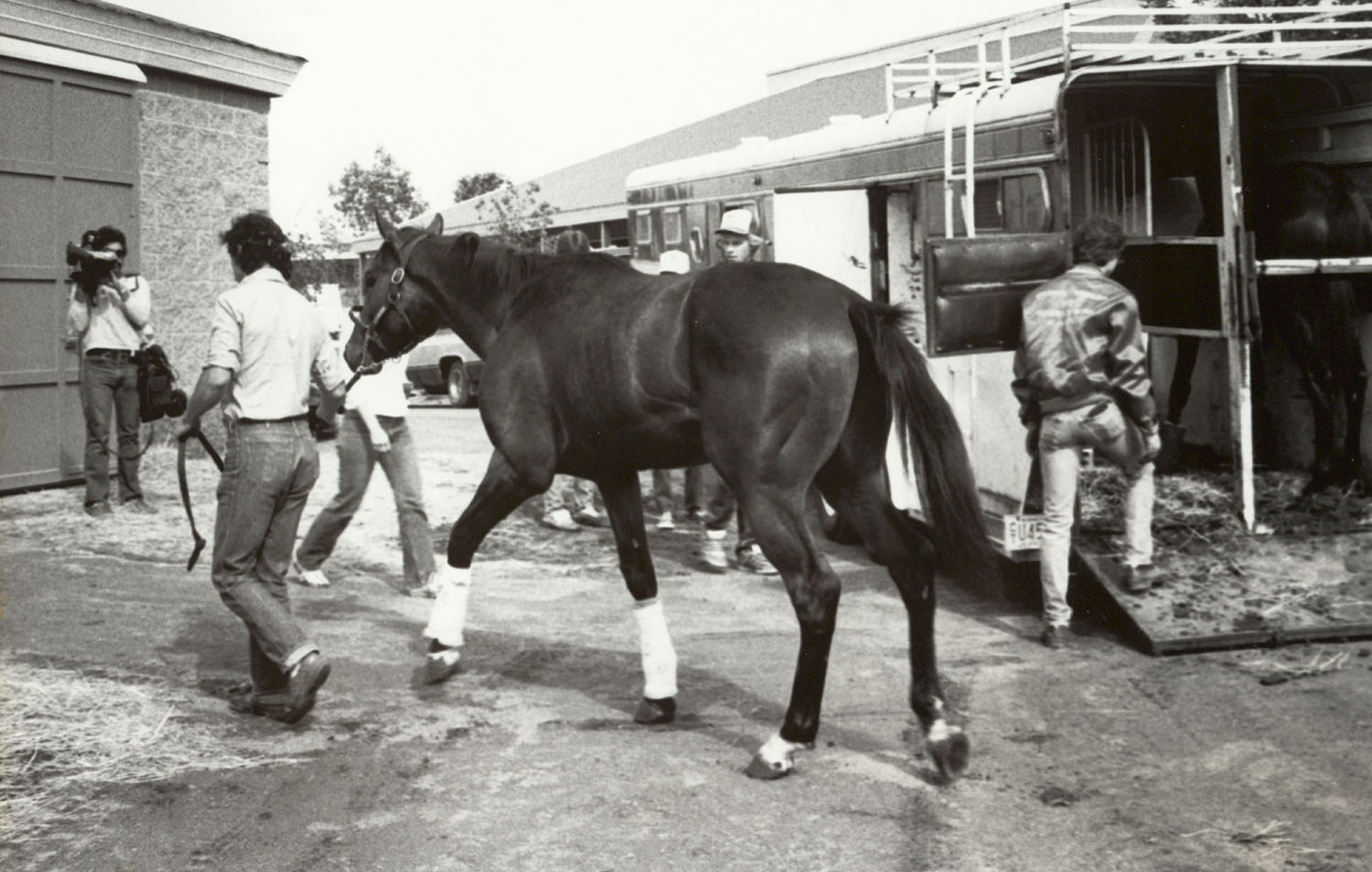Saturday’s celebration of a quarter century of racing in Minnesota conjures up different memories for different folks. Canterbury Downs opened its doors 25 years ago on Saturday to rave reviews, large enthusiastic crowds and fanfare unseen in the state for years.
A number of regulars at Canterbury the past few years were here in 1985, too, and helped bring racing to Minnesota.
Stall superintendent Mark Stancacto was on the grounds before the grandstand or many of the barns on the backside were completed.
“I was here when the hard-hats still were,” he recalled on Wednesday. And he recalls the little flub-ups and the adjustments that had to take place to make things right.
Stancato’s reminiscences were interrupted by a call from the present, and he responded, much as he did to the light switch situation 25 years ago, by calling a repairman. “Hey, can we get a carpenter over in D3,” he said. “The wall between stalls 13 and 14 is about to fall over.”
“It was an exciting place, a dream come true,” he recalled on Wednesday. “There was so much excitement.”
Rhone had a farm in St. Peter at the time but had no room there to accommodate the horses he had coming in from Thistledown and had to have space immediately at Canterbury. The first horse off the truck that day was Pure Pressure, owned by Tom Kellin of Hamel. Rhone can’t recall Pure Pressure’s record that first summer, but this horse has a place in Minnesota racing history nonetheless.
Another fellow on the grounds in 1985, someone known to just about every horseman at Canterbury, was Harvey Harrison..
Harvey, for those who’ve never heard him called by his given name, is better known as Buckshot.
Buckshot was on the grounds before construction was finished on the grandstand, sent ahead by trainer Doug Oliver. “They flew me up here,” Buckshot said. “They were still building the place when I got here.”
This far north?
Some of the hard boots from Kentucky felt the same way. “Bernie Flint, Rusty Arnold, Forrest Kaelin, a lot of those Kentucky trainers waited to see how it was going up here before they committed,” Stancato said. “Once they got here we had a lot of them for the first four years or so. They really liked it.”
Peggy Davis’s assignment was clipping out past performances in the racing office when Canterbury opened in 1985. She was determined to watch history in the making, despite her job. “I was able to get loose to watch the first race,” she said.
Unfortunately, there were too many tall people in front of her on the grandstand apron and she had to settle for what her height allowed. “I could only see the jockeys,’ she recalled.
So, she could see Marty Hamilton, just not the horse he was riding _ Faiz, the first winner in state history.
Peggy has not missed any of the 23 meetings conducted at Canterbury, and has particular memories of that first summer. There was a carriage used in those days to retrieve the patrol judges from their outposts. “I hitched a ride back to the racing office on the carriage,” she said.
Patrice Underwood, who runs the HBPA office now, was Patrice Finnegan in 1985 and was part of the original jockey colony.
She recalled that many of her colleagues were part of a trailer camp at the campground in Savage.
“I lived in a motor home,” she said. “Roger Rashall lived right across from me. Dean Kutz was across the street. Jack Kaenel was there, too.”
Patrice recalled, too, how tough the traffic was en route to Canterbury. “It took my dad (Pat) three hours to get to Burnsville from south of Eau Claire,” she said. “And just as long to get from Burnsville to the track.”
Richard Grunder has had various roles at Canterbury. Once the track announcer, he no w hustles book, just as he did in 1985. “I just knew this place was going to be big,” he recalls about that first season, when he hustled book for Walter Orona and Kaenel.”
w hustles book, just as he did in 1985. “I just knew this place was going to be big,” he recalls about that first season, when he hustled book for Walter Orona and Kaenel.”
Now, 25 years later, Grunder is doing the same job on the backside, for Ry Eikleberry and Juan Rivera.
Twenty-five years later. Many of the names working Canterbury have changed. Many have not.
